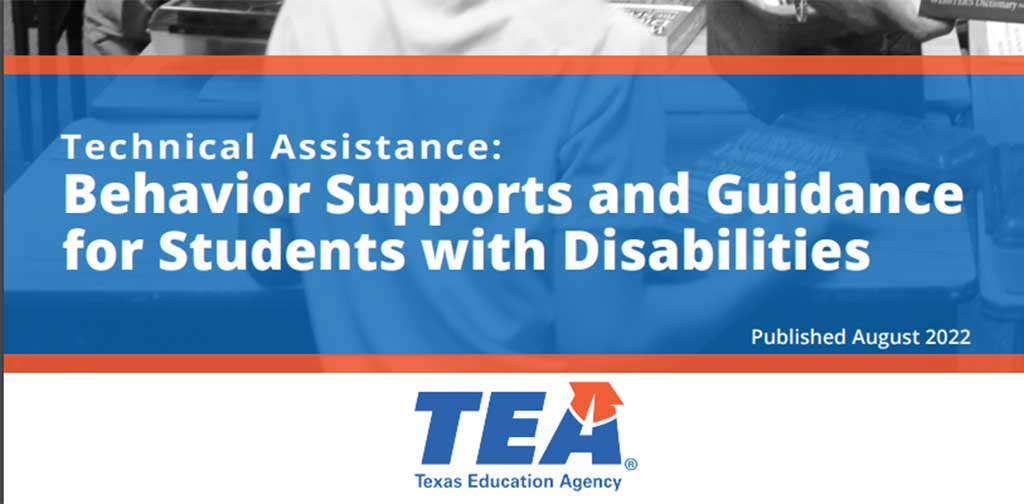During the 2015 session, the Texas legislature passed a law (SB 507) requiring video tapping in certain special education classrooms in Texas public schools; an action that drew national attention. SB 507 addresses safety concerns that had become an issue for many parents of children in special education classrooms and settings. The stated purpose of the law is “to promote student safety”. At the request of a parent, trustee, or staff member, school districts, and open-enrollment charter schools “shall provide equipment, including a video camera, to each school in the district or each charter school campus in which a student who receives special education services in a self-contained classroom or other special education setting is enrolled.”
An interesting statement in the history of the bill, it seems to be trying to soften opposition by schools and educators: “As filed, S.B. 507 includes the necessary safeguards to ensure that video footage will only be used to ensure the safety of special needs children, and not to scrutinize innocent educators.”
Who Does This Law Apply To?
The law applies to self-contained classrooms and other special education settings. Self-contained classrooms are only those classes on a regular school campus or settings where the majority of the students are provided special education and related services for at least 50% of the instructional day; while other special education setting means a classroom on a separate campus (i.e., a campus that serves only students who receive special education and related services).
The original focus of the bill was on non-verbal students, or those with a limited ability to communicate. So it appears that it was decided at some point that the law should apply to a broader group of students. As passed, the law includes life skills and behavior adjustment classes, and many Autism, medically fragile, and preschool programs for children with disabilities (PPCD) classes.
What Does The Law Say?
This law goes into effect this upcoming school year 2016-2017, and just like any other new law there are areas that are well defined, while others allow for more discretion within their guidelines; let’s look at some:
Funding
IDEA and state special education funds cannot be used to purchase the equipment, or maintain the system and the records created. Districts may solicit and accept gifts, grants, and donations from any person to provide cameras.
Timelines
The state rules do not address a timeline for installation and having the equipment functioning. The issue of equipment breakdowns or malfunctions are not addressed.
Notice
Before equipment is installed, written notice of the placement must be given to all campus staff and to the parents of students receiving special education services in that classroom or setting. It is left to schools to decide if campuses will post a notice at the entrance of any self-contained classroom or other special education setting in which video cameras are placed stating that video and audio surveillance are conducted.
Consent
At one point the bill said that, while parent consent for video tapping was not required, if a parent sent a written objection to the school, a camera could not be placed in the classroom. However, in the final version parent consent or objection is not mentioned.
Recordings
Video recordings must record all areas of a room, except inside of a bathroom or any area in which a student’s clothes are changed, while auditory recording must include all areas of the room. Video must be kept for at least 6 months after it is recorded.
District Policies
While the rules developed by TEA have been adopted by the state board of education, some decisions and responsibilities lie with the districts. For example, decisions regarding whether video surveillance will be conducted in classrooms and other settings in which extended school year services are provided are left to local discretion. As part of their responsibilities, districts must have policies that:
- list the procedures for requesting video surveillance, list the procedures for providing written notice to the campus staff and the parents, and require video cameras to be operated at all times during the instructional day when students are in the self-contained classroom or other special education setting;
- include a statement: regarding the individuals who will have access to video cameras and video recordings and the roles and responsibilities of those individuals, that the regular or continual monitoring of video is prohibited, and that video recordings must not be used for routine teacher evaluation or monitoring or for any purpose other than the promotion of student safety; and
- include the procedures for reporting a complaint alleging that an incident occurred in a self-contained classroom or other special education setting in which video surveillance under TEC, §29.022 is occurring, and a description of the limited circumstances under which the recordings may be viewed.
Personnel That Can View Recordings
District employees or the parent of a student who is involved in an incident documented by a recording can view the recording. Department of Family and Protective Services (DFPS) staff, peace officers, school nurses, a district administrator trained in de-escalation and restraint techniques, district human resources staff member or appropriate agency or State Board for Educator Certification personnel may also view the tape. These individuals must notify DFPS, if they believe that the recording documents a possible violation of the Texas family code; parents also have this right. If an individual believes that the recording documents a possible violation of district or school policy, administrators may allow access to the recording to appropriate legal and human resources personnel. The law does not waive immunity from liability of schools, or their employees.
Incident means an event or circumstance that: (A) involves alleged “abuse” or “neglect,” as those terms are described in Texas Family Code, §261.001, of a student by an employee of the school district or charter school or alleged “physical abuse” or “sexual abuse,” as those terms are described in TFC, §261.410, of a student by another student; or (B) allegedly occurred in a self-contained classroom or other special education setting in which video surveillance under TEC, §29.022, and this section is conducted.



